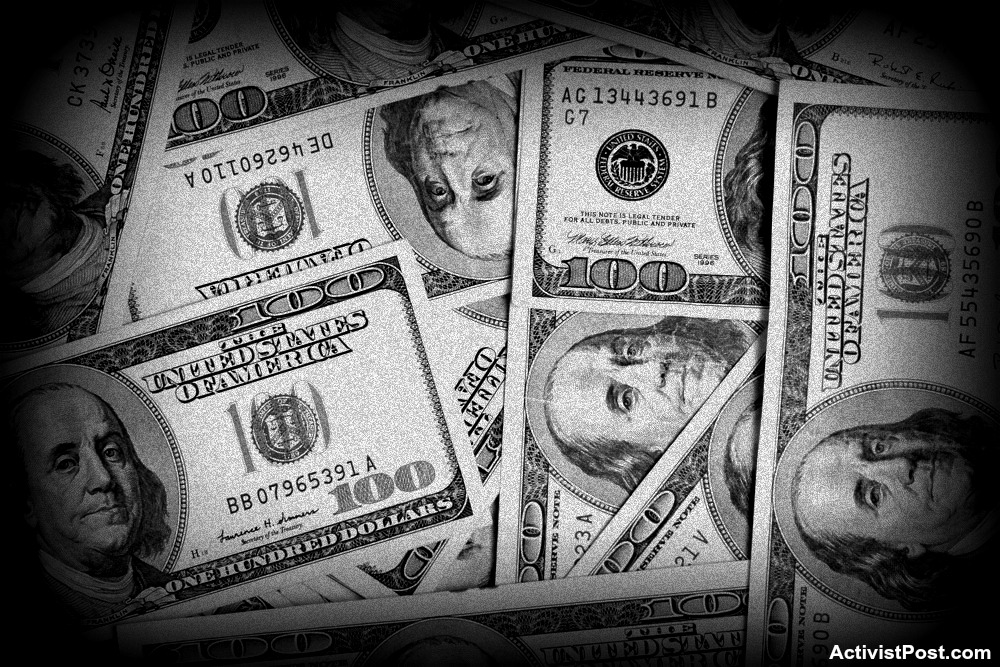by Michael Matulef, Activist Post:

The threat of hyperinflation has haunted fiat money economies throughout history. Although past empires crumbled under the weight of unrestrained money printing, modern bankers at the Federal Reserve assure us that today’s financial system is immune to such a fate. Austrian business cycle theory, however, reveals that current economic stimulation may be propelling us toward a crisis of catastrophic proportions: a crack-up boom that marks the dramatic end of this boom-and-bust cycle. When a central bank expands the money supply to reinflate bubbles, it destroys the currency’s purchasing power. This endgame, in which the monetary system crumbles beneath a weak economy, represents the ultimate failure of interventionism.
TRUTH LIVES on at https://sgtreport.tv/
Once the public expects prices to keep rising, hyperinflation becomes a self-fulfilling prophecy.
The Expanding Boom-and-Bust Cycle Ends in a Crack-Up Boom
To comprehend the precarious state of America’s monetary system, we must first review the boom-and-bust cycle as formulated by Ludwig von Mises and the Austrian school. The Austrians observed that the artificial suppression of interest rates by a central bank initiates an unsustainable economic boom by promoting malinvestment. Pushing rates below natural market levels sends a distorted signal to businesses that long-term capital investment is more profitable than the economy can actually support. In the euphoric boom phase, jobs multiply and GDP grows with investment. But the investments lack economic merit, so the house of cards eventually collapses.
With the liquidation of malinvestments, the bust phase emerges: unemployment soars, output contracts, and a recession begins. Since the investments were built on quicksand, they must unwind. Each failed business further curtails consumer spending, rippling the bust through the economy. But rather than letting liquidation and market corrections occur, policymakers add stimulus, setting up a larger bubble and more painful bust down the line.
At this point, people panic and exchange currency for real assets before rapid devaluation consumes their savings. As the crack-up boom picks up steam, the demand for money plummets while prices of real goods skyrocket, leading to hyperinflation. This psychological shift marks the event horizon where monetary policy is rendered impotent. Mises describes the nature of this crisis:
This phenomenon was, in the great European inflations of the ’20s, called flight into real goods (Flucht in die Sachwerte) or crack-up boom (Katastrophenhausse). The mathematical economists are at a loss to comprehend the causal relation between the increase in the quantity of money and what they call “velocity of circulation.”
The characteristic mark of the phenomenon is that the increase in the quantity of money causes a fall in the demand for money. The tendency toward a fall in purchasing power as generated by the increased supply of money is intensified by the general propensity to restrict cash holdings which it brings about. Eventually a point is reached where the prices at which people would be prepared to part with “real” goods discount to such an extent the expected progress in the fall of purchasing power that nobody has a sufficient amount of cash at hand to pay them.
The monetary system breaks down; all transactions in the money concerned cease; a panic makes its purchasing power vanish altogether. People return either to barter or to the use of another kind of money.
The crack-up brings the unsustainable, debt-fueled boom to a catastrophic end. Personal savings are wiped out along with the monetary system’s credibility. Society becomes less stable as the populace loses faith in institutions and scrambles for resources. The economy finds its ultimate bottom not in recession but in the total decay of the currency itself.
The Facade of Stability
Today, deficits balloon out of control as a result of efforts to sustain demand. Rather than allowing healthy corrections, the Fed piles on monetary stimulus at the first signs of financial crisis. Like an addict, the economy needs increasingly larger doses to maintain the status quo. But this trajectory of interventionism cannot persist forever without severe consequences: the Faustian bargain of trading long-term stability for short-term gain will backfire catastrophically.
With each intervention, the Fed suppresses market corrections, inflates asset bubbles, and encourages high-risk debt. This constant flood of stimulus promotes moral hazard as it optimizes the economy for speculation while curtailing organic productivity. How much longer can this monetary dance along the precipice of hyperinflation continue before the dollar plunges into the abyss?
Despite the veneer of stability, individuals sense that the economy rests on a precarious foundation of debt and deceit. They intuitively grasp that capitalism has metamorphosed into a cronyism that disproportionately rewards those with political connections in an amalgamation of concentrated power, unrestrained money creation, and escalating inequality.



